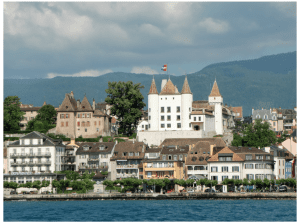Ballast Water Treatment (BWT)
 At a time when COAs are being renegotiated, some people have been asking about the cost implication of Ballast Water Treatment (BWT) systems to Shipowners and whether they’ll try and push this expense onto Charterers through freight rate adjustments. Following on from the special Ballast Water Management (BWM) feature in our Oct. 2016 monthly market report, there continues to be some uncertainty and misunderstanding with regards to the IMO’s BWM Convention, and although the resolution suffers from a number of flaws, there has been a little more clarity with the transitional period following the IMO’s MEPC70 meeting.
At a time when COAs are being renegotiated, some people have been asking about the cost implication of Ballast Water Treatment (BWT) systems to Shipowners and whether they’ll try and push this expense onto Charterers through freight rate adjustments. Following on from the special Ballast Water Management (BWM) feature in our Oct. 2016 monthly market report, there continues to be some uncertainty and misunderstanding with regards to the IMO’s BWM Convention, and although the resolution suffers from a number of flaws, there has been a little more clarity with the transitional period following the IMO’s MEPC70 meeting.
Even though some bodies have been lobbying the regulation and asking for an extension, it still stands that 12 months following the accession of Finland to the BWM convention on 8 Sep. 2016, every vessel must install a BWT system by their first renewal of the International Oil Pollution Prevention Certificate (IOPP) during special survey. But there are still a few concerns including: understanding what equipment best suits their trading needs, vessels, type of ballast water being treated in the right amount of time; will there be enough dry-docking available; whether they can purchase directly from the manufacturer and whether there will be technicians available.
Then of course there’s the cost. Although there is no “market price” for a BWT system, initial information available in the public domain indicate costs (systems plus installation) may be around $300,000 to $2M for depending on the size of the vessels. While there is some flexibility over when a vessel must have a BWM system onboard, pressure is on Owners who want to trade in US waters. Even though there are over 60 IMO- approved systems available, there are currently only three USCG approved system; AlfaLaval, Optimarin and OceanSaver. These three companies were very busy after the approval with many interested parties looking at getting quotes, and although not as many orders have been placed as Owners weigh up all the costs, systems and timing of investment, even considering the age of the vessel and prevailing market conditions (the older the vessel the more expensive it is to retrofit); but it is expected that orders will peak between the end 2017 / beginning 2018. These three companies are currently in an enviable position, it is anticipated that there will be around 10 USCG type approved manufacturers by 2018.
And what happens if there’s a sudden rush for drydocking, this too may become more expensive, and that’s if there is even enough dry- docking space. Optimarin estimates that from ordering to installation is around six months while OceanSaver says theirs can be installed in 14 weeks. One saving grace is that a vessel has until its next IOPP survey to install a BWM system onboard, therefore it is expected there will be less of a sudden rush and more of a longer boom over the next five years.
Photo Credit: Shutterstock















